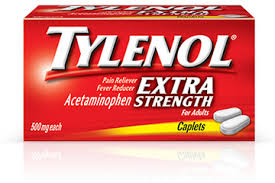
Environmental Factors Tied to PBC – Acetaminophen specifically.
 Environmental Factors Tied to PBC
Environmental Factors Tied to PBC
Loss of tolerance to PDC-E2 is pivotal
Note: This article points the finger firmly at acetaminophen (Tylenol or Paracetamol) as a prime cause of PBC!
Action Points
- Primary biliary cholangitis (PBC), a chronic cholestatic liver disease, appears to begin with a loss of immune self-tolerance leading to the destruction of small- and medium-sized intrahepatic bile ducts and eventually to the development of fibrosis and biliary cirrhosis.
- Data sugest that environmental factors such as chemical compounds foreign to living organisms can trigger primary biliary cholangitis by contributing to the loss of immune self-tolerance.
Environmental factors such as chemicals can trigger primary biliary cholangitis (PBC), according to researchers from China and the University of California Davis.
In a review published in the World Journal of Gastroenterology, the researchers looked at the natural history, genetics, and immunobiology of PBC, with a particular emphasis on data that show how the loss of tolerance to 0-E2 (the major autoantigen of PBC) is the pivotal event in the etiology of PBC.
The review was led by Jinjun Wang, PhD, of Yangzhou University in China. Primary biliary cholangitis (also known as primary biliary cirrhosis) is a chronic cholestatic liver disease that overwhelmingly affects women. It has been suggested that PBC begins with a loss of immune self-tolerance leading to the destruction of small- and medium-sized intrahepatic bile ducts and eventually to the development of fibrosis and biliary cirrhosis.
The fact that most patients with PBC are women (about 8:1 female to male ratio) suggests that there “are significant genetic components” to the disease, wrote Wang and his colleagues. Studies have also established that, in addition to genetic disposition, environmental factors also contribute to the loss of tolerance in PBC.
According to the authors, some of these studies have shown how environmental factors can trigger autoimmunity in PBC through molecular mimicry.
“Although microorganisms are possible candidates for the induction of autoimmune disease by molecular mimicry, there are other potential environmental factors,” the authors wrote, “including chemical compounds foreign to living organisms.”
They pointed out that PBC is characterized by high titer of antimitochondrial autoantibodies directed against the E2 subunit of pyruvate dehydrogenase (PDC-E2) lipoyl domain.
In the article, Wang and his colleagues hypothesized — and presented evidence from quantitative structure-activity relationships and animal models — that “xenobiotic” (i.e., induced by a foreign chemical substance) modification of the PDC-E2 lipoyl domain could lead to a loss of self-tolerance and “is a pivotal event in the initial etiology of PBC in genetically susceptible hosts.”
They based this thesis on several findings.
For example, quantitative structure-activity relationship studies suggest that disruption of the lipoyl ring S-S linkage renders the lipoic acid “activated” and receptive for xenobiotic modification and subsequent AMA recognition. Data from immunological characterization of antigen and Ig isotype specificities against one such lipoyl acid mimic SAc and rPDC-E2 strongly support a xenobiotic etiology in PBC.
This is significant, the authors contend, considering the high frequency at which AMAs are found in patients with acute liver failure.
Many, if not most, cases of liver injury are the result of drug overdose, and in this review Wang and his colleagues examined the link between xenobiotics and AMA in acetaminophen induced liver injuries.
In one study an analysis of serum samples from subjects who have experienced acute liver failure found that severe liver injury could lead to AMA production. Specifically, the study found AMA with the same antigen and epitope specificity as patients with PBC in 35% of patients who experienced acetaminophen poisoning, which suggests that the PDC-ED lipoyl domain is likely a target of APAP induced reactive oxygen species.
Furthermore, the authors pointed out that while 85% of acetaminophen (the most widely used prescription drug in the U.S.) is metabolized in the liver to nontoxic compounds, the remaining 15% is converted into a highly-electrophilic metabolite N-acetyl-p-benzoquinoneimine (NAPQI).
According to Wang and his colleagues, a highly reactive electrophilic metabolite such as NAPQI can deplete the intracellular glutathione pool, making PDC-E2 more vulnerable to further modification by electrophiles.
“[I]n genetically susceptible individuals, the prolonged exposure to electrophilic agents such as acetaminophen, may initiate and/or enhance the breakdown of self-tolerance to PDC-E2 and eventually lead to PBC,” the authors wrote.
The authors wrote that going forward their work in this field will be “directed at examining the biochemical and immunological mechanisms underlying the breach of tolerance in autoimmunity in PBC by environmental chemicals. Knowledge gained from this model may have significant preventive and therapeutic implications in the clinical management of PBC.”
The authors disclosed no relationships with industry.
- Reviewed by Henry A. Solomon, MD, FACP, FACC Clinical Associate Professor, Weill Cornell Medical College and Dorothy Caputo, MA, BSN, RN, Nurse Planner
- This activity is part of our Clinical Context curriculum in PBC/NASH
last updated
-
Primary Source
World Journal of Gastroenterology